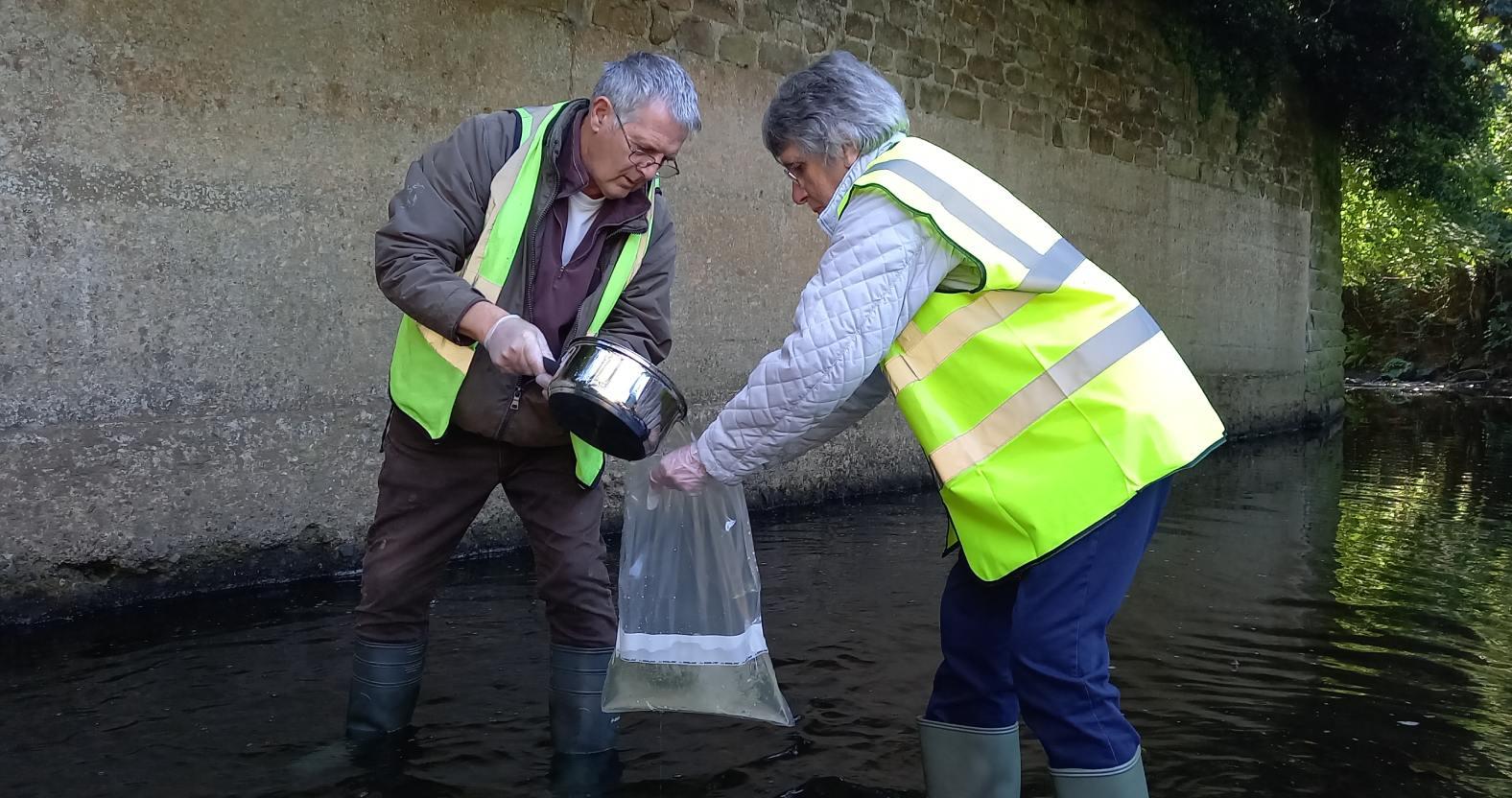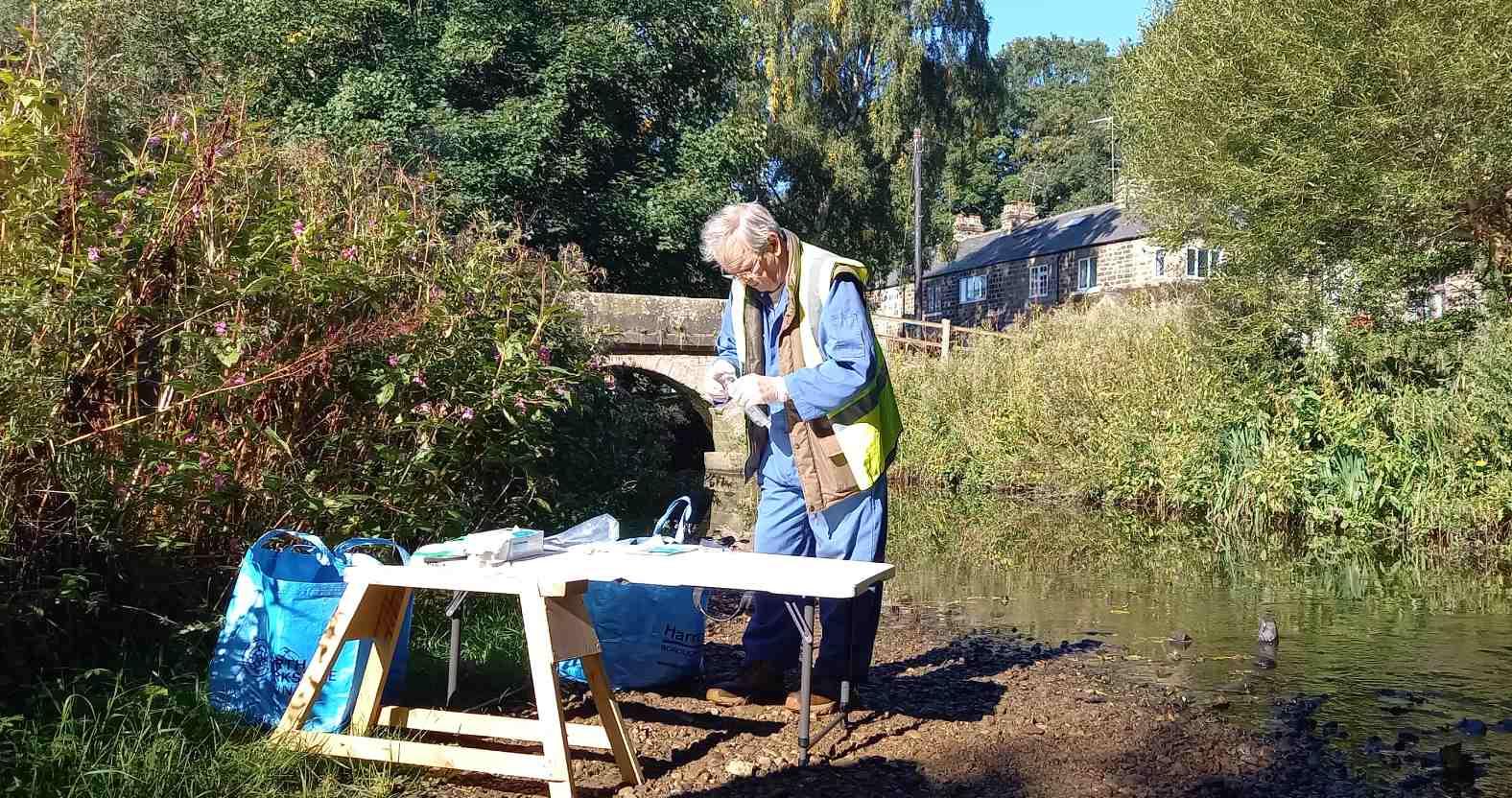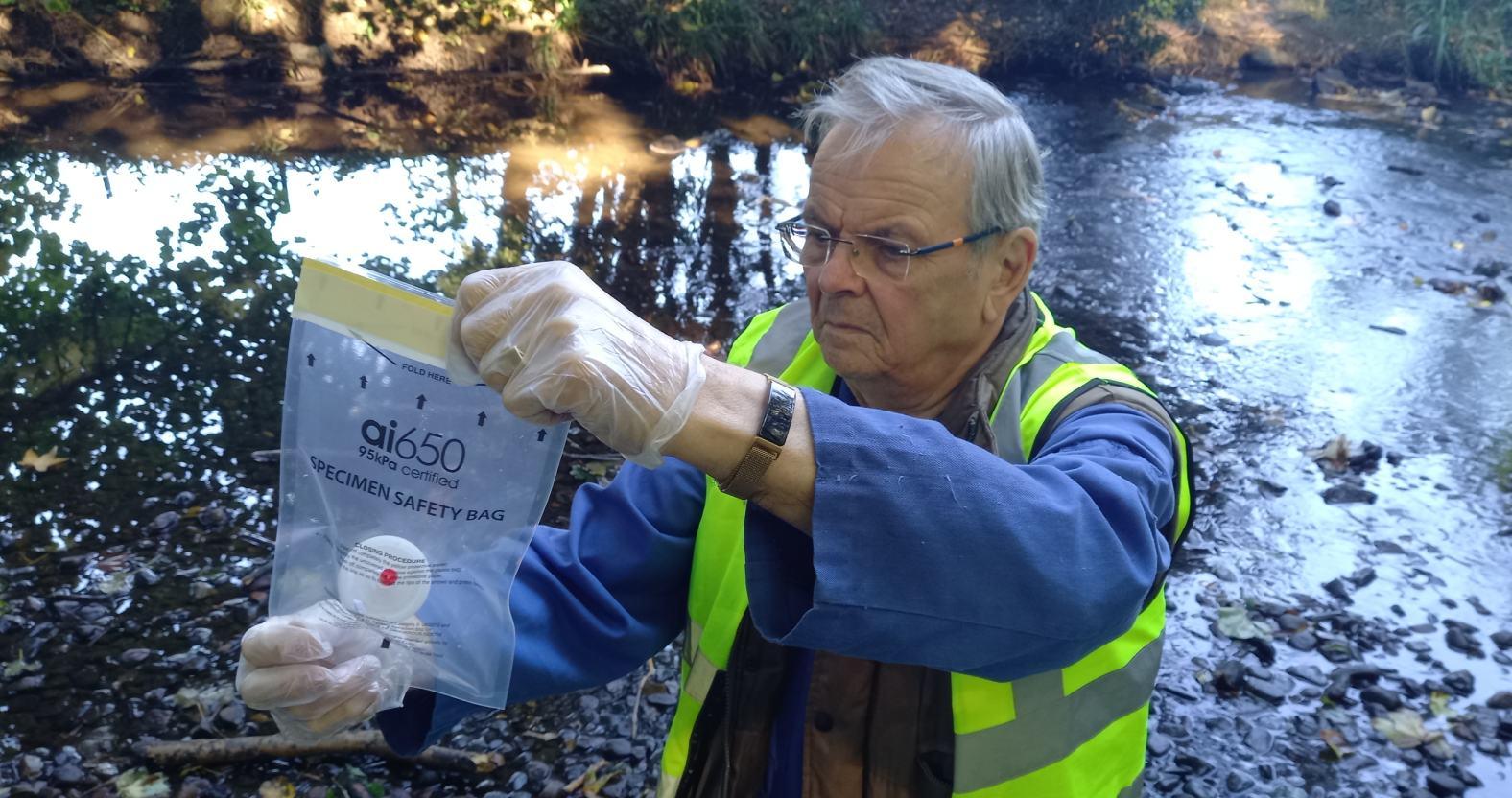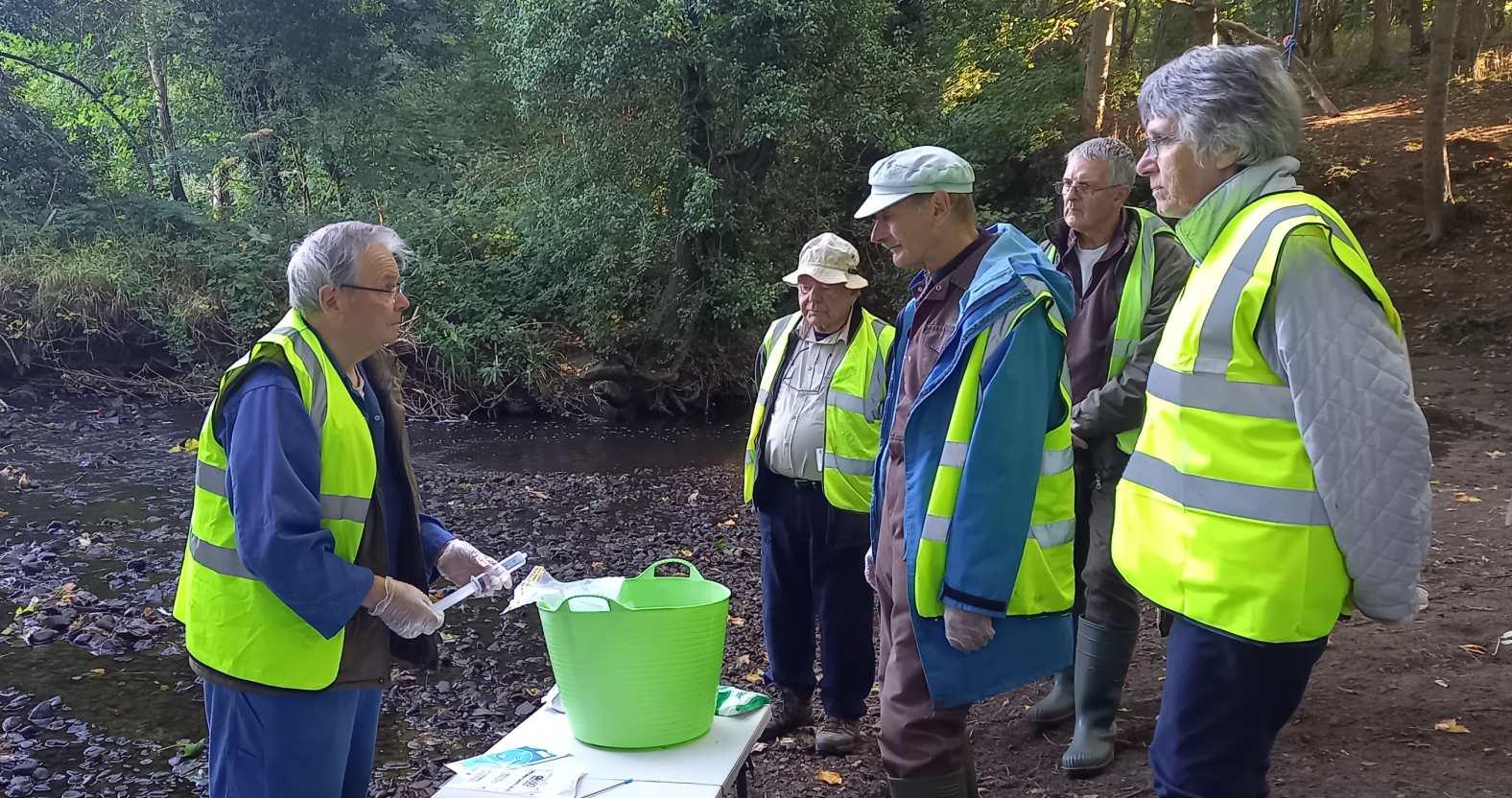Subscribe to trusted local news
In a time of both misinformation and too much information, quality journalism is more crucial than ever. By subscribing, you can help us get the story right.
- Subscription costs less than £1 a week with an annual plan.
Already a subscriber? Log in here.
21
Sept 2024
Volunteers DNA-test Oak Beck for fish lost in toxic spill

It’s just over two years since a toxic spill turned Oak Beck in Harrogate brown and killed off the river’s wildlife, including hundreds of fish.
It was a catastrophic incident that shocked many who witnessed its aftermath.
Keith Wilkinson MBE, who has led conservation efforts in the area for over 40 years, said at the time that the beck would take three years to recover. This week, he and a band of volunteers from Bilton Conservation Group (BCG) were back on the riverbank to find out how well the beck is bouncing back.
Visual analysis – in other words, taking a look – gives a depressing reading: it looks all but dead. Turning over stones on the riverbed just downstream from Spruisty Bridge at Knox, Mr Wilkinson was hoping to find freshwater crustaceans, molluscs, worms and caddis fly larvae, but found no life at all.

Left: healthy willow weed growing in a Yorkshire river Right: the same species killed off by pollution in Oak Beck, a tributary of the Nidd.
He said:
Maybe we need another clean year before we see major recovery. The absence of flora in the water – such as the once-prevalent willow weed (Fontinalis) streaming in the current from its anchor on the stones – is a problem which we may need to give some thought to.
The universal brown algae trailing from the stream bed and surface of the stones is indicative of generally poor water quality, but at least there was no sign of the dreaded grey sewage fungus which means a virtually dead stream supporting little more than sludge worms.
The September 2022 incident seems to have been the result of two spills on the same day. The first consisted of thick metallic sludge and oily scum thought to have come from the old New Park gasometer, which engineers had been dismantling, and the second is believed to have been a sewage discharge below the Hydro.
A healthy river has 21-30 different life forms living on the bottom – the more variety, the better.
But mayflies, worms, snails and especially stone flies are all particularly vulnerable to pollution from hydrocarbons and heavy metals of the kind that appear to have leaked into Oak Beck two years ago.

Bilton Conservation Group volunteer Jeff Davies (left) at the confluence of Oak Beck with Cow Dyke Beck, pumping river water through a filter held by fellow volunteer Simon Gledhill, as BCG members Chris Smith and John Branson (far right) look on.
That was the worst of a series of incidents going back many years. In just the five years preceding it, the Environment Agency revealed in response to a Freedom of Information request from Mr Wilkinson that there had been 42 reported incidents along the beck.
Most of these involved sewage, which poses a risk for human health. For this reason, one of the BCG volunteers, John Branson, also collected samples for his own programme of testing for E. coli, the faecal bacteria that can cause serious stomach upsets. Early results indicate levels four times the permissible maximum.

Keith Wilkinson MBE preparing a syringe to process a sample of river water from Oak Beck, at the ford below Spruisty Bridge, to test it for fish DNA.
Despite the apparent wasteland of the riverbed, Mr Wilkinson did spot a good-sized shoal of minnows under the bridge, and the team’s test samples will help determine what other fish may have returned.
For the DNA testing programme, most of whose costs are being covered by a £1,000 grant from the North Yorkshire Council locality budget of Monika Slater, Lib Dem councillor for Bilton Grange and New Park, the team took water samples from three sites – Oak Beck’s confluence with Cow Dyke Beck, the ford at Knox, and from below the viaduct downstream of Oak Beck’s confluence with the River Nidd.

Keith Wilkinson with a filter, bagged and labelled ready to be sent for analysis.
These will be sent for analysis by a company called Nature Metrics in Surrey, which can distinguish between 14 different UK freshwater fish species.
Mr Wilkinson, who is chairman of Nidd Gorge Advisory Partnership and honorary secretary of Bilton Conservation Group, said:
We haven’t had many serious pollution incidents since the last big one in 2022, so we’re hoping that the five species of fish that were here before then have recovered.
And if it is on the mend, we want to encourage and enhance it. So we need to persuade polluters not to pollute, and make builders aware of how they clear their site debris so they don’t silt it up. And we also need to clear up the beck again.
The importance of this last point is evident from just a cursory inspection of the river near Skipton Road. Along most of its length, through the countryside to the west and north of Harrogate, the main threats to Oak Beck’s water quality come from sewage outflows and field run-off.

Keith Wilkinson briefing volunteers
But where it passes through the north-western edge of the town at New Park, it encounters other dangers, such as polluted wastewater from building sites and more obviously, abuse by people using it as a dump. On the day of BCG’s testing, the Stray Ferret saw road signs, shopping trolleys, traffic cones, a steering wheel, and a bicycle in the water.
Once all that has been cleared out and another year has passed, Mr Wilkinson is hopeful that the river will be well on the road to recovery. In the meantime, he remains measured in his assessment, at least until the fish DNA test results come back at some point over the next fortnight.
He said:
I imagine the river sample will be quite rich and diverse, but I fear the purely Oak Beck samples may be limited to free-swimming fish like minnows or trout, with the bottom-dwellers (stone loach and bullheads) and slow-moving sticklebacks still being absent.
I doubt we'll pick up traces of European eel and brook lamprey, but I hope I’m proved wrong.
2